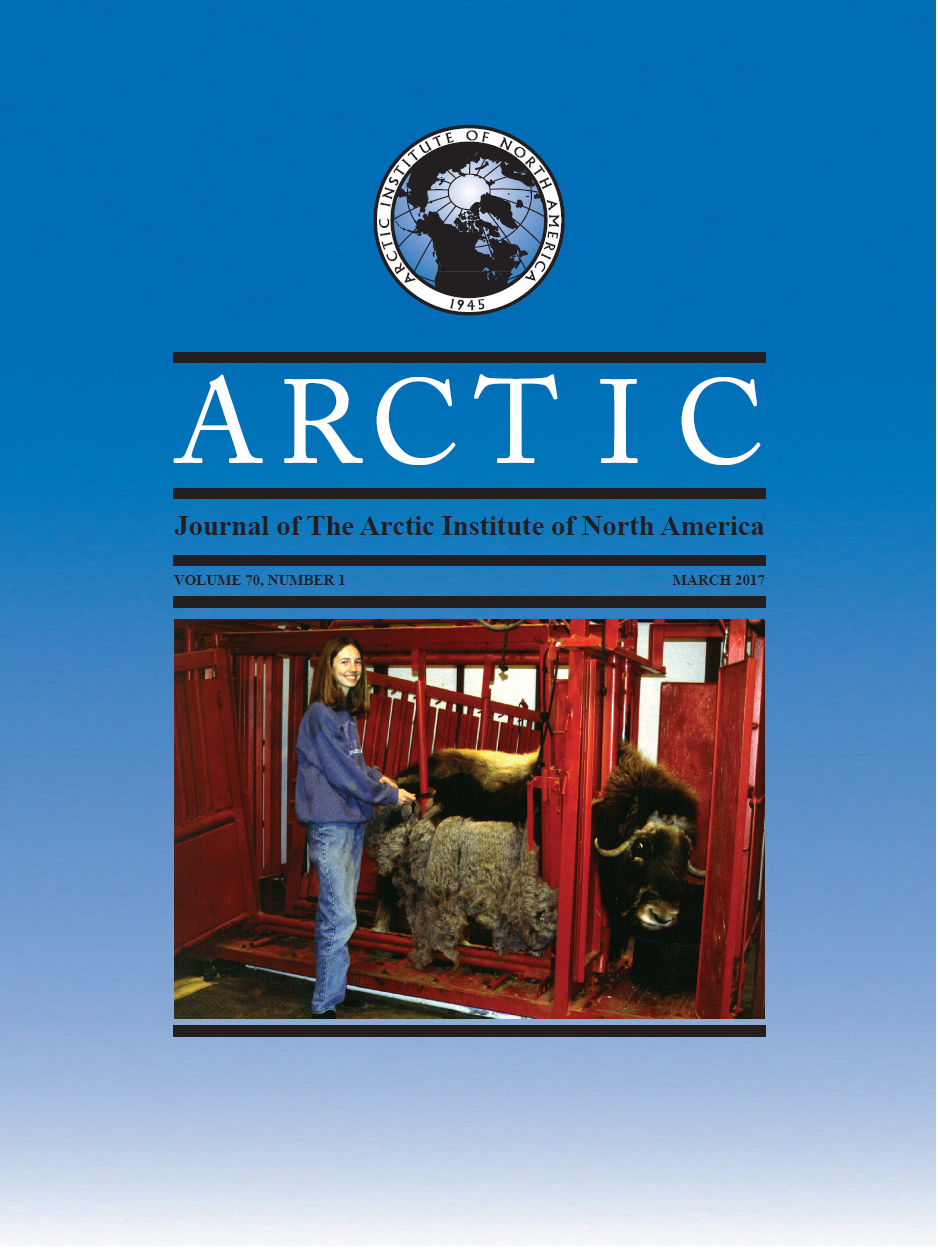Frequency of Injuries from Line Entanglements, Killer Whales, and Ship Strikes on Bering-Chukchi-Beaufort Seas Bowhead Whales
DOI:
https://doi.org/10.14430/arctic4631Keywords:
bowhead whale, Balaena mysticetus, ship strike, Arctic Ocean, Bering Sea, line entanglement, commercial gear entanglement, Orcinus orca, killer whale predation attempts, propeller injuries, scars, aboriginal whalingAbstract
We analyzed scarring data for Bering-Chukchi-Beaufort (BCB) Seas bowhead whales (Balaena mysticetus) harvested by Alaska Native hunters to quantify the frequency of line entanglement, ship strikes, and killer whale-inflicted injuries. We had 904 records in our database for whales landed between 1990 and 2012, and after data quality screening, we found 521 records containing information on scarring. Logistic regression was used to evaluate different combinations of explanatory variables (i.e., body length, sex, year, year-group) to develop a prediction model for each scar type. We also list bowhead whales that were harvested, found dead, or observed alive entangled in commercial line/fishing gear. Our findings suggest that about 12% of harvested bowheads show entanglement scars. Their frequency is highly correlated with body length and sex: about 50% of very large bowheads (> 17 m) show such scars, while whales under 9 m rarely do, and males show a significantly higher rate than females. Scars associated with ship strikes are infrequent and occur on ~2% of all harvested whales; body length, sex, and year were not significant factors. Scarring from attempted killer whale predation was evident on ~8% of landed whales. As with entanglement injuries, the frequency of killer whale scars was much higher (> 40%) on whales more than 16 m in length and statistically more frequent in the second half of the study (2002 – 12). Increased killer whale injuries in the recent decade are consistent with studies conducted on bowheads of the Eastern Canada-West Greenland population. The findings presented here reflect the most thorough analysis of injury rates from entanglement, ships, and killer whales for the BCB bowheads conducted to date. They indicate that (1) entanglement rates primarily from pot fishing gear (crab or cod or both) are relatively high for very large and presumably older bowheads, (2) collisions with ships are infrequent at present, and (3) scarring from killer whales is frequent on very large adult whales (> 17 m). Considering that bowhead habitat is changing rapidly (e.g., sea ice reduction), industrial ship traffic in the Arctic is increasing, and commercial fishing operations are expanding to the north, we strongly recommend that monitoring of scarring and injuries on harvested bowheads continue into the future as a means of documenting change.


